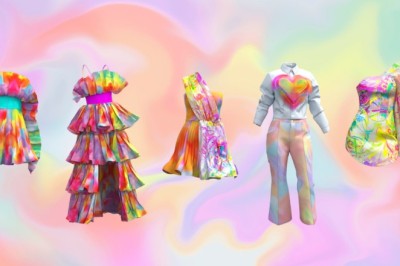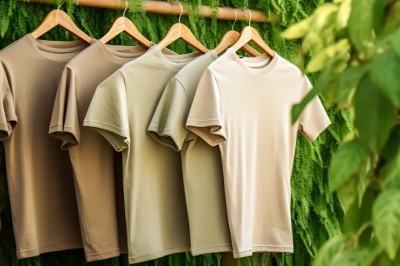views

Fashion Forward: Exploring the Intersection of Technology and Sustainability in Clothing Design
The fashion industry has long been a symbol of glamour, creativity, and innovation. Yet, it is also one of the most resource-intensive and environmentally damaging industries globally. In recent years, however, there has been a significant shift as designers, brands, and consumers increasingly prioritize sustainability. This transformation is driven by the intersection of technology and sustainability in clothing design, fostering a new era of eco-conscious fashion.
The Environmental Impact of Fashion
Before delving into technological advancements, it’s essential to understand the environmental impact of traditional fashion. The industry is responsible for about 10% of global carbon emissions, making it a significant contributor to climate change. Additionally, it consumes vast amounts of water and generates substantial waste. For instance, producing a single cotton T-shirt requires approximately 2,700 liters of water, and millions of tons of textile waste end up in landfills each year.
Technological Innovations Driving Sustainable Fashion
- 3D Printing
3D printing has emerged as a revolutionary technology in sustainable fashion. This process involves creating three-dimensional objects layer by layer using digital models. In clothing design, 3D printing allows for on-demand production, reducing excess inventory and waste. Designers can experiment with intricate patterns and structures that were previously impossible to achieve, all while using less material. Additionally, 3D-printed garments can be made from recycled plastics, further enhancing sustainability.
- Biodegradable Materials
Traditional textiles like polyester and nylon are derived from petroleum and are not biodegradable, contributing to long-term pollution. However, advancements in biotechnology have led to the development of biodegradable materials such as mushroom leather, lab-grown silk, and algae-based fabrics. These materials decompose naturally, reducing the environmental footprint of fashion items. For example, mushroom leather, made from mycelium, offers a sustainable alternative to animal leather, requiring fewer resources and emitting fewer pollutants during production.
- Digital Fashion
Digital fashion represents an innovative approach to sustainable clothing. Designers create virtual garments that exist solely in the digital realm, allowing consumers to purchase and wear these items in virtual environments such as social media, video games, and augmented reality (AR) applications. This reduces the need for physical production and eliminates waste associated with traditional garment manufacturing. Digital fashion also offers endless creative possibilities, as designs are not constrained by physical limitations.
- Smart Textiles
Smart textiles, also known as e-textiles, integrate technology into fabrics to enhance functionality and sustainability. These textiles can monitor body temperature, adjust to environmental conditions, and even generate energy. For example, solar-powered textiles can harness sunlight to charge electronic devices, reducing the need for disposable batteries. Additionally, smart textiles can be designed to last longer and require less frequent washing, conserving water and energy.
Sustainable Fashion Practices
- Circular Fashion
Circular fashion is a concept that promotes a closed-loop system where garments are designed, produced, and used in ways that minimize environmental impact. This approach includes recycling and upcycling materials, designing for longevity, and encouraging the reuse and repair of clothing. Brands like Patagonia and Eileen Fisher have embraced circular fashion by offering repair services and recycling programs, helping to extend the life of their products.
- Ethical Production
Sustainability in fashion is not limited to environmental impact; it also encompasses social responsibility. Ethical production involves fair labor practices, safe working conditions, and fair wages for workers. Brands committed to ethical production often seek certifications such as Fair Trade and Global Organic Textile Standard (GOTS) to ensure their practices meet rigorous social and environmental standards.
- Transparency and Traceability
Consumers are increasingly demanding transparency in the fashion industry. They want to know where their clothes come from, how they are made, and the impact they have on the environment. Brands are responding by providing detailed information about their supply chains and production processes. Technologies such as blockchain are being used to track and verify the origin of materials, ensuring that garments are made sustainably and ethically.
The Role of Consumers
While technological advancements and sustainable practices are crucial, consumers also play a significant role in driving change. By making conscious choices and supporting brands that prioritize sustainability, consumers can influence the fashion industry to adopt greener practices. This includes buying fewer but higher-quality items, choosing second-hand or vintage clothing, and supporting sustainable and ethical brands.
Challenges and Future Directions
Despite the progress, the fashion industry faces several challenges in its quest for sustainability. High production costs, technological limitations, and consumer awareness are significant hurdles. However, continued innovation and collaboration between designers, brands, and consumers hold promise for a more sustainable future.
The future of fashion lies at the intersection of technology and sustainability. As technological advancements continue to emerge, they offer new possibilities for creating eco-friendly garments that do not compromise on style or quality. By embracing these innovations and prioritizing sustainability, the fashion industry can move towards a more responsible and environmentally-friendly future.











Comments
0 comment